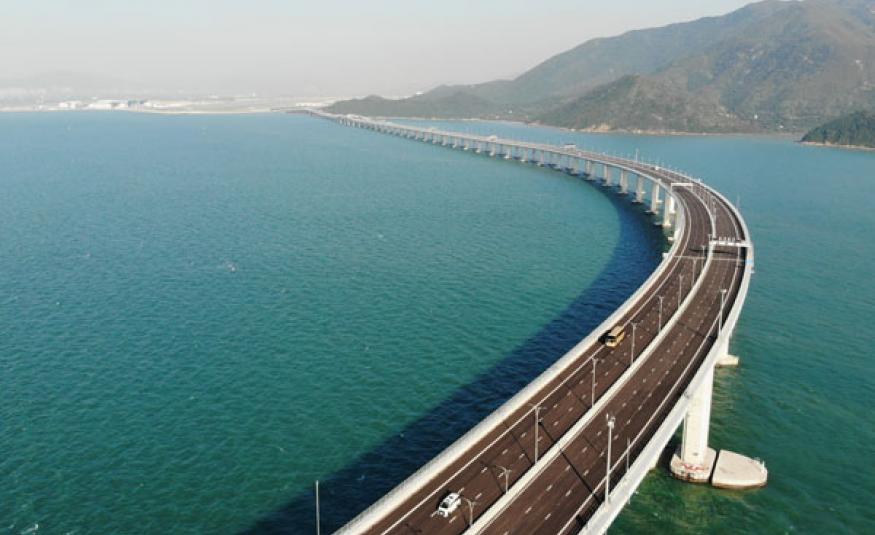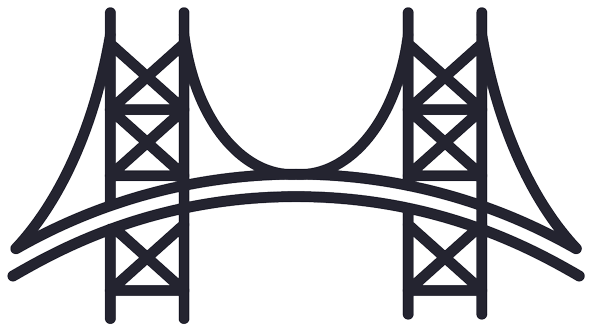Martin Donovan offers insights into some major exhibition moves in South China, and the impact of the new HZMB.
For an insight into China’s suitability as an exhibitions industry powerhouse, take a look at two recent events: a huge import fair in Shanghai and, south west along the coast, the opening of a 55km sea bridge and tunnel link from Hong Kong to Zhuhai and across to Macau.
At a time when the United States’ Trump administration has locked horns in a trade war with China, consider the China International Import Expo (CIIE) held at the National Exhibition and Conference Centre in Shanghai over six days in November.
Though the inaugural CIIE was planned in May 2017, well before President Donald Trump ordered punitive tariffs on imports into the US, the event is nonetheless a signal from China that it wants to increase business with the rest of the world. Figures from the show indicate that is likely to be the case, whether it’s with a post-Brexit Britain or a protectionist US.
The import expo, which was opened by Chinese President Xi Jinping, attracted 3,600 exhibitors from 172 countries and regions, with 400,000 buyers visiting, according to reports. President Xi vowed to open telecom, education and health sectors wider to foreign investment, with limits on foreign ownership eased and promises on IP and copyright, a bugbear of many overseas businesses operating in China. More than 180 US companies took part in the show, with Britain’s pavilion bearing then slogan “extraordinary innovation”.
Such was the importance of the fair in showing China’s intentions about opening up for imports that Shanghai companies were encouraged to give staff two or three days leave to attend.
“China’s exhibition landscape will focus on having a rising percentage of these import shows, which is unlike the past 40 years. State policy is always a clear indicator of industrial and economic direction,” said Wilson Tong, a Hong Kong-based consultant with Pelican & Partners who has also organised exhibitions across in Asia for the past 17 years.
Another key part of that state policy is the clusters of economic regions with satellite cities based around larger metropolises such as Shanghai in the east, Beijing-Tianjin, Chengdu-Chongqing in the west, and – straddling the Pearl River Delta – Hong Kong, Shenzhen, Zhuhai and Macau. It is here where the most dramatic developments are unfolding for international exhibition organisers and buyers.
The Hong Kong-Zhuhai-Macau Bridge (HZMB) finally opened on 23 October. From the Hong Kong side, the bridge starts near the international airport and AsiaWorld-Expo, the special administrative region’s second major exhibition facility along with Hong Kong Convention and Exhibition Centre.
In July 2018, a strategic agreement was signed between AWE and Zhuhai International Convention and Exhibition Centre for the co-hosting of events at their venues either side of the bridge. This means, for example, that business meetings can be held in Hong Kong, then events in Zhuhai – about a 45-minute drive along the HZMB – and a gala dinner in Macau should delegates want to take in all three cities.
The time is ripe therefore for another vision to fall into place: that of the Greater Bay Area, an economic region linked by the bridge and providing a market of 80m people within a 90-minute driving radius, according to AWE. It means a whole new destination for exhibition organisers under the “Hong Kong-Zhuhai-Macao Bridgehead EXPO Tourism Belt” that has been agreed between the two sides, and using the Portuguese spelling for Macau.
“Zhuhai has become an important hub linking Hong Kong and Macau. It will achieve a high concentration of people, logistics and capital flow, and promote a booming development of the exhibition industry within Guangdong-Hong Kong-Macau Greater Bay Area,” Fu Rui, general manager of the Zhuhai centre, told Exhibition World. “This extraordinary bridge provides practical possibilities for this new pattern.”
For suppliers to the regional exhibition industry like Hamson Wai, of AD Target, the bridge means being able to take buyers from the huge event facilities in Shenzhen and Guangzhou through Hong Kong and to Zhuhai and Macau. His main office is in the Kowloon area of Hong Kong, but the workshop facilities AD Target uses for booth design and other contracts are in Dongguan, a huge conurbation of towns and factories located between Shenzhen and Guangzhou, the provincial capital and home to the twice-yearly Canton Fair.
“We can now ship what we need from Dongguan to Zhuhai and over to Macau. What’s just as important is that you can get 40-50 buyers from one place to another with the major international airport in Hong Kong also helping,” said Wai, who has just concluded several shows in Macau including food and wine fair and a luxury auto show.
Wai added that organisers should keep any eye on what develops with the Zhuhai Air Show as the event tended to reflect exhibition growth in the Greater Bay Area. “The Zhuhai Air Show has now been upgraded to the China Air Show…I don’t know if it’s directly related to the bridge but it’s biggest in China and all the hotels were full.Rates have more than doubled with many foreign buyers in town. I have a client who goes to the air show every two years and the event is a good barometer for the region.”
Keep an eye also on the mega-facility being built in Shenzhen, the huge metropolis know as China’s Silicon Valley just over the boundary with Hong Kong. Shenzhen World Exhibition & Convention Centre is expected to be the world’s largest single building when it is fully completed.
Rather than posing a threat to the exhibition industry in Hong Kong, Wilson Tong, of Pelican and Partners, believes it will complement a more closely integrated Greater Bay Area. “This is not a bad news for Hong Kong…if Hong Kong loses some big shows to Shenzhen, it will be better than losing them to a city further away.”
Martin Donovan is editor of MIX – Asia’s Creative Meetings Magazine, based in Hong Kong








